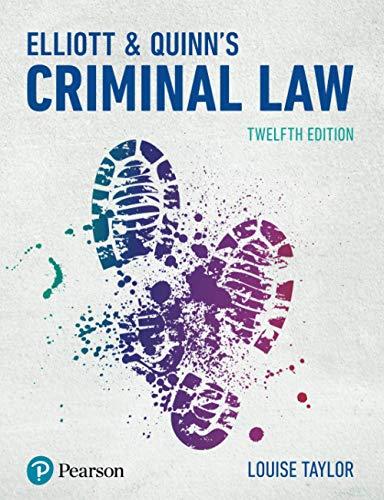Question
1. Which of the following is an ideal condition for a free market? a)There are no parties, institutions, or governmental units regulating the quantity of
1. Which of the following is an ideal condition for a free market?
a)There are no parties, institutions, or governmental units regulating the quantity of the goods being bought or sold in the market.
b)There are a few buyers and many sellers, and all of them have a substantial share of the market.
c) All the buyers and sellers in the market are free to leave the market but there are significant barriers to entering the market.
d)All buyers have full knowledge of what other buyers and sellers are up to including quantity of goods sold, but not the prices and quality of goods being sold.
e)The participants in the market have very strong preferences as to which seller or buyer they would deal with.
2. Which of the following is true with regard to the control of administrative agencies?
a)Congress can seldom pass laws repealing regulations that agencies promulgate.
b)Federal agencies are not subject to the fiscal scrutiny of the Office of Management and Budget.
c)Agencies are not permitted to go directly to Congress for increases in budget.
d)A business having exhausted all administrative remedies cannot seek judicial review of a final agency decision.
3.
Which of the following is a fair criticism of the legitimacy of administrative lawmaking?
a)The industries regulated often capture the agencies that are supposed to regulate them.
b)Agencies tend to stimulate the ability to compete.
c)They always overregulate, thereby stifling individual initiative.
d)Most agency activities are not reviewable
4.
According to the Freedom of Information Act, _____.
a)any person has a legally enforceable right to access to geological information concerning wells
b)a federal agency is required to respond to a document request within 10 days
c)requesters are not required to pay the cost of locating and copying the records
d)all the documents are available for public inspection
e) there are a total of five exceptions to the Act
5.
In Marshall v. Barlow's, Inc., which of the following led the court reach its final decision?
a)No search warrant is expressly required under the OSHA.
b) Mr. Barlow refused the inspector admission to the employee area of his business.
c)Warrantless searches are rarely unreasonable.
d) Employees are prohibited from reporting OSHA violations.
e) Something observable by the public without a warrant does not apply to the Government inspector.
6.
Which case dealt with the problem of "byssinosis"?
a)Marshall v. Barlow's
b)Michigan et al. v. EPA
c) Aqua Slide 'n Dive v. CPSC
d)Plessy v. Ferguson
e) American Textile Manufacturers v. Donov
7.
Which of the cases in the readings focused on the need for agencies to sometimes include "cost" as a significant factor in whether and what kind of final rule to make?
a) Michigan et al. v. EPA
b) Aqua Slide 'n Dive v. CPSC
c) American Textile Manufacturers v. Donovan
d)a and b only
e) b and c only
f) all of the above
Step by Step Solution
There are 3 Steps involved in it
Step: 1

Get Instant Access to Expert-Tailored Solutions
See step-by-step solutions with expert insights and AI powered tools for academic success
Step: 2

Step: 3

Ace Your Homework with AI
Get the answers you need in no time with our AI-driven, step-by-step assistance
Get Started


